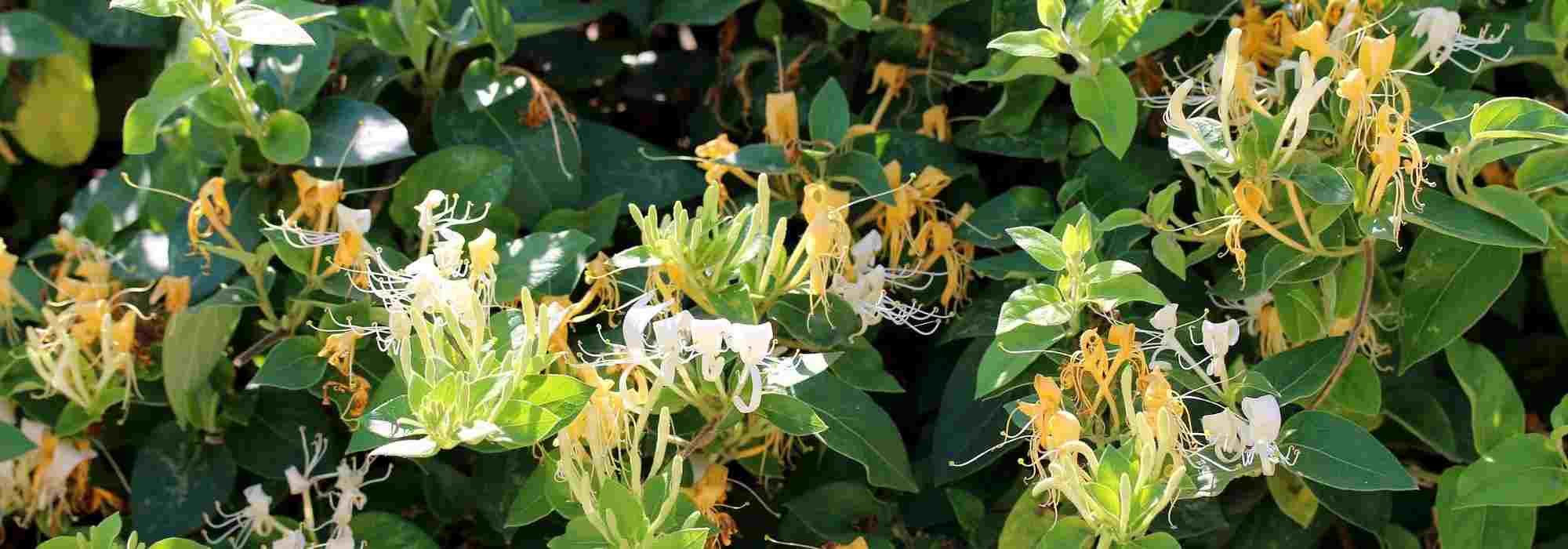
How to grow Honeysuckle in a pot?
to enhance a wall or create a privacy screen
Contents
Whether climbing or shrubby like Lonicera fragrantissima, Honeysuckle is perfectly suited for pot planting. Very decorative, the climbing species with voluble stems quickly cover their support, which should be carefully chosen. Very hardy and easy to grow, Honeysuckles are ideal near a terrace or on a balcony. This way, you can enjoy the delightful fragrance of the trumpet-shaped flowers throughout the flowering period. The genus Lonicera includes nearly 200 species and numerous cultivars that offer great diversity: colour and duration of flowering, deciduous to evergreen foliage, and sizes.
Suitable varieties, required materials, planting and care: discover all our tips for growing and flowering a Honeysuckle in a pot!
What type of pot and support should you choose?
To plant Honeysuckle in a pot, it is essential to choose a large container with drainage holes that has a diameter of at least 40 cm or a minimum capacity of 30 litres. Thanks to their porosity, terracotta pots allow the roots to breathe. There are also rectangular wooden or resin troughs with built-in trellis that can serve as a privacy screen on a terrace or balcony.
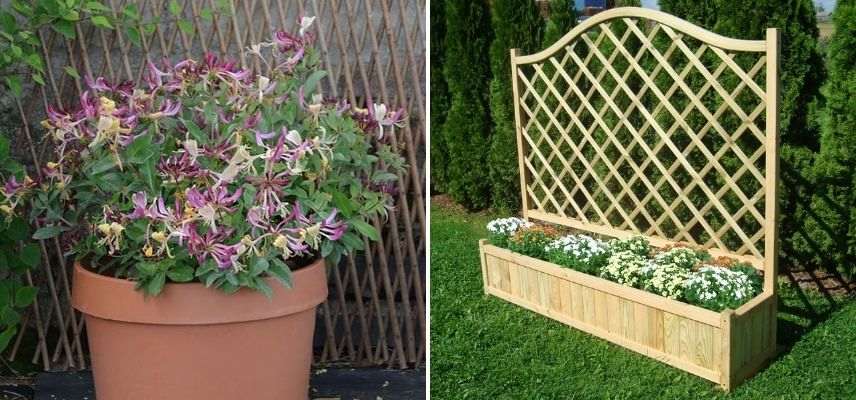
Lonicera ‘Chic et Choc’ in a pot – Trough with trellis suitable for a Honeysuckle (photo Ofer El-Hashbar – Flickr)
The climbing honeysuckle requires a support to grow vertically. These voluble stems, lacking climbing roots, cannot cling on their own. Without a structure, Honeysuckle is creeping and can potentially be used as ground cover. When planting, guide it and tie it with ties. Position the pot in front of a wall to which a trellis, pergola, fence, arch, tree trunk, or pole is attached. The more DIY-inclined can create their own support using large bamboo stakes or wire, for example.

Wrought iron support, wooden trellis, and mesh
What soil for a honeysuckle in a pot?
Honeysuckle is a plant for all types of soils. However, in pots, the substrate must be rich in nutrients, light, and well-drained to prevent water stagnation in winter. Create a mixture of equal parts good garden soil and planting compost. Well-decomposed compost promotes drainage and can replace the compost. Also, plan for a drainage layer of gravel, clay balls, or pumice.
Discover other Honeysuckle
View all →Available in 2 sizes
Available in 2 sizes
Available in 2 sizes
Available in 1 sizes
Available in 1 sizes
Available in 1 sizes
Available in 1 sizes
Available in 2 sizes
Available in 1 sizes
Available in 1 sizes
Which variety to choose?
For pot cultivation, the smallest varieties of Honeysuckle are the most suitable. Among the less exuberant, the following varieties can be mentioned:
- Lonicera periclymenum ‘Chic et Choc’ is a dwarf variety that does not exceed 1 m in height and 60 centimetres in width.
- Lonicera ‘Caprilia Impérial cov’ with changing colours forms a clump 3 metres high and 1.5 metres wide.
- Lonicera henryi ‘Copper Beauty’ climbs to 2 metres in height and spreads up to 1.5 metres.
- Lonicera periclymenum ‘Scentsation’, grown in a container, reaches up to 3 metres high with a span of 2 metres.
- Lonicera heckrotii ‘Gold Flame’, this deciduous hybrid with rapid growth develops little in width (maximum 1 m) and does not exceed 3 metres in length.
Currently used as a replacement plant for boxwood, the Shrubby Honeysuckle Lonicera nitida can also be grown in pots. When well pruned, it forms beautiful topiaries. In contrast, Lonicera pileata is mainly used as ground cover.
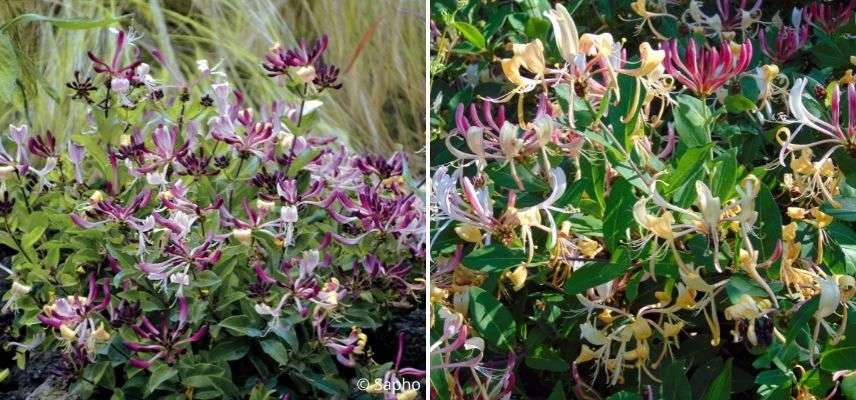
Lonicera periclymenum ‘Chic et Choc’ and Lonicera heckrotii ‘Gold Flame’
When and how to plant a honeysuckle in a pot?
Honeysuckle can be planted in pots all year round, except during periods of drought and frost. However, the best planting times remain autumn and spring. Here’s how to proceed with planting:
- Soak the root ball in a bucket of water for a few minutes and wait until no more bubbles rise to the surface. This helps to expel the air present in the root ball.
- Prepare your container: drill holes if necessary and place your drainage layer at the bottom (clay balls, gravel, or pumice).
- Fill your pot with a mix of garden soil and potting compost, along with a handful of crushed horn.
- Create a hole that can accommodate your plant.
- Remove the Honeysuckle from its pot and gently untangle the roots that are on the periphery of the root ball. This helps the plant to develop its root system in all directions.
- Position the climbing Honeysuckle slightly inclined towards the support. Fill any empty spaces with your mix.
- Firm the soil and water generously. Add more soil if necessary and apply mulch.
- Don’t forget to guide the stems onto the support.
Where to place a honeysuckle in a pot?
A sunny exposure is suitable for Honeysuckle as long as its base remains in the shade, kept cool and sheltered by a wall facing North or East. In regions south of the Loire, avoid the scorching sun by placing its pot in partial shade.
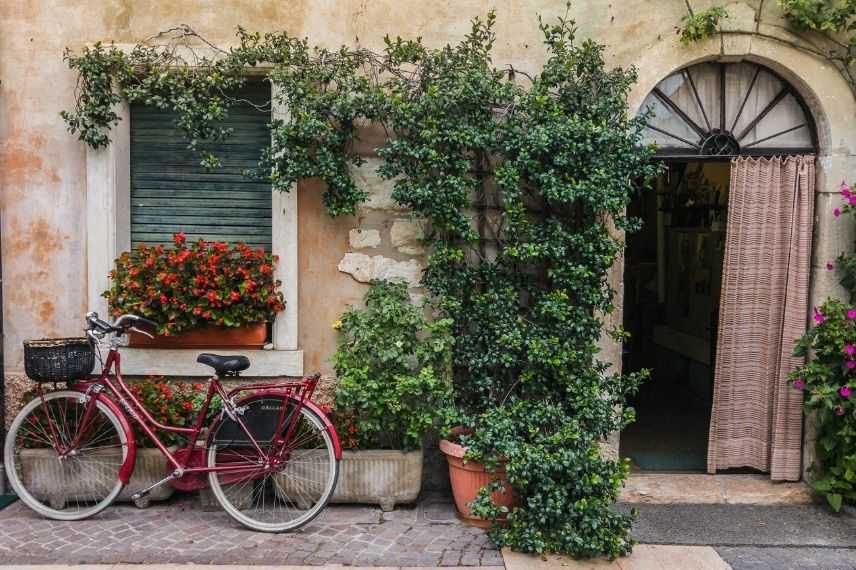
Honeysuckle in a pot trained against a house facade (photo Sönke Biehl – Flickr)
How to care for a honeysuckle in a pot?
Watering
Watering the honeysuckle in a pot should be regular, especially during summer droughts. Cover with a thick mulch to slow down water evaporation and retain moisture. During winter, continue watering sparingly and space out the intervals. The substrate should simply remain moist and cool.
Fertilisation
A fertiliser application is necessary every year at the beginning of spring. You can use dried blood scratched into the base of the plant. It acts quickly to achieve beautiful foliage and abundant flowering. Liquid fertilisers diluted in watering water are also effective for a lovely bloom.
Crushed horn introduced into the substrate at planting is a slow-release fertiliser that aids in better establishment of the plant by supporting root development.
Pruning
Wait until the end of flowering to prune your honeysuckle, so that the new shoots flowering the following year have time to develop before winter. A light pruning is sufficient to encourage branching and correct the habit of the honeysuckle. Remove dead, damaged, diseased, and tangled stems. Prune the flowering branches by cutting above a node (the point where a leaf or shoot attaches to a stem). Do not cut the main branches.
Older plants can be rejuvenated by a late winter pruning that will promote growth and stimulate the production of new shoots. However, these climbing plants will not flower for the next two years.
Weak and bare plants at the base require a severe pruning that will make them more vigorous.
Staking
It is essential to stake and guide the honeysuckle at planting. Then every year, intervene throughout the growing season. Select and secure the most vigorous shoots at regular intervals to renew the framework within 2-3 years. Loosen any ties that constrict the stems.
Top dressing
Every spring, replace the surface substrate with a mix of fresh potting soil and well-rotted compost. For a climbing plant, top dressing is much easier to carry out than repotting. If the container you initially used is large enough, it is not necessary to repot the honeysuckle into a larger pot.
Wintering
Honeysuckles are generally very hardy. However, potted roots are at greater risk of freezing than those in the ground and are less resistant to cold. If you are in very cold regions, here are our tips:
- If possible, move your container and the structure on which your honeysuckle has developed to a sheltered spot before the first frosts.
- If not, add mulch, as it tends to compress and decompose over time.
- Remove the saucer to prevent stagnant water from freezing.
- Elevate your pot using pieces of wood.
- Create insulation around the pot using straw, dead leaves, bubble wrap, or geotextile.
Potential diseases and pests
Honeysuckle can be attacked by aphids. To combat them, ladybirds will be a great help. You can also spray the foliage with a mixture of water, black soap, and baking soda. Discover our sheet on aphids: identification and treatment.
Powdery mildew may also appear as a white powder on the leaves. It is important to act quickly, as this fungal disease spreads rapidly. Discover the natural treatment using milk to combat powdery mildew.
To go further
- Discover our article on Shrubby Honeysuckles, Lonicera: planting, pruning and maintaining
- Also check out our complete guide on Honeysuckle: planting, pruning and maintenance
- Find our selection of the most fragrant honeysuckles.
- Subscribe!
- Contents
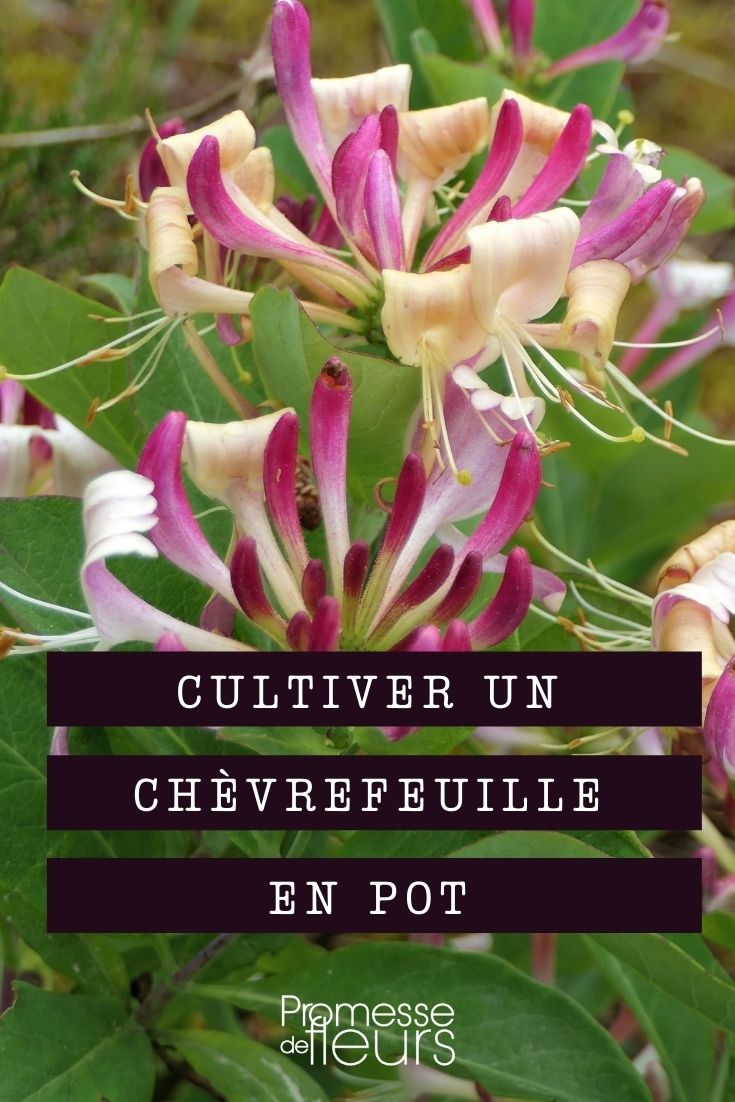































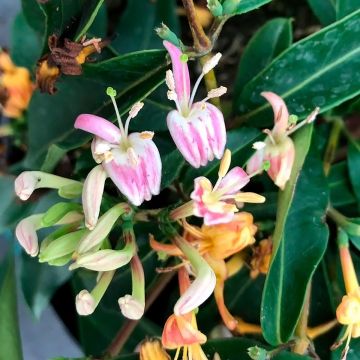
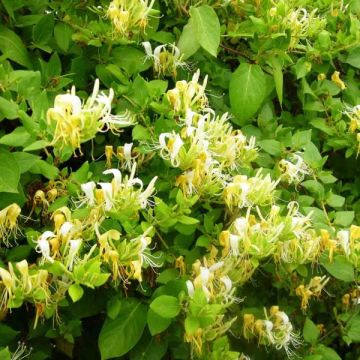
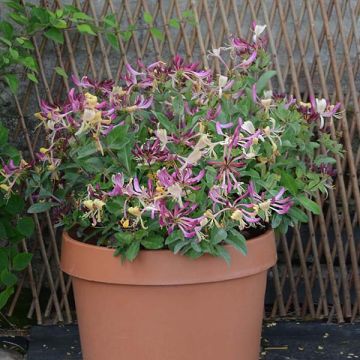
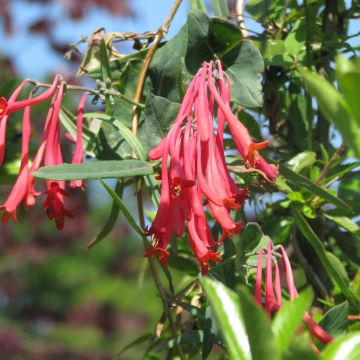
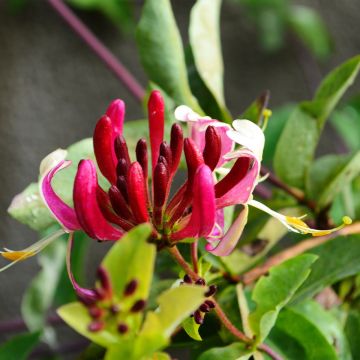
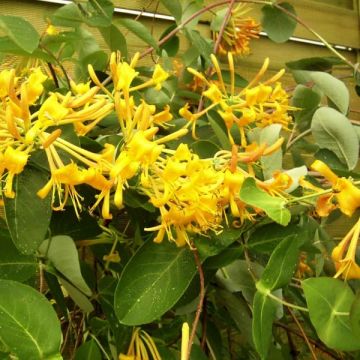
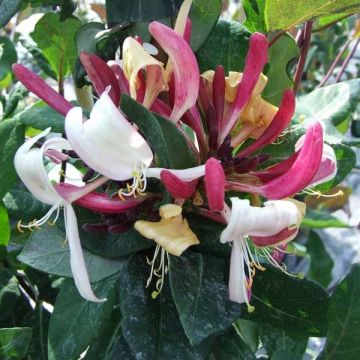
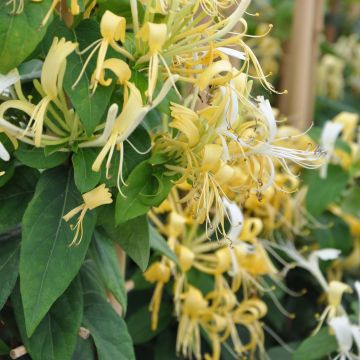
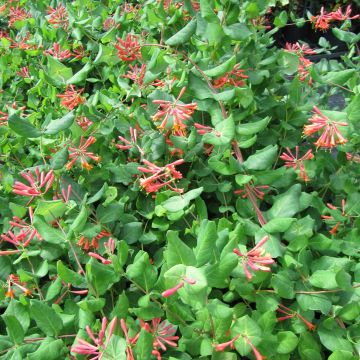
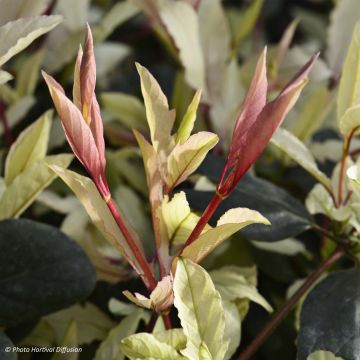
Comments